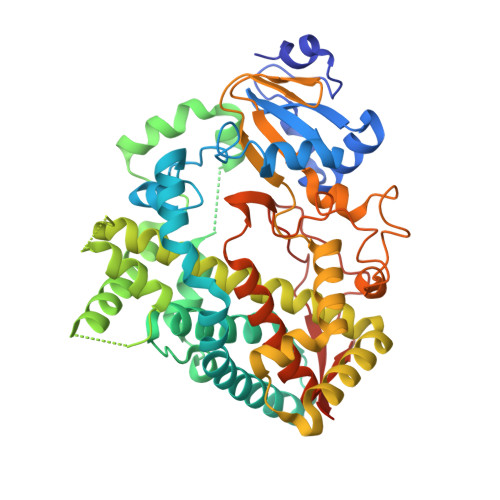Interaction of human cytochrome P4503A4 with ritonavir analogs.
Sevrioukova, I.F., Poulos, T.L.(2012) Arch Biochem Biophys 520: 108-116
- PubMed: 22410611
- DOI: https://doi.org/10.1016/j.abb.2012.02.018
- Primary Citation of Related Structures:
3TJS - PubMed Abstract:
Ritonavir is a HIV protease inhibitor that also potently inactivates cytochrome P450 3A4 (CYP3A4), a major human drug-metabolizing enzyme. To better understand the mechanism of ligand binding and to find strategies for improvement of the inhibitory potency of ritonavir, currently administered to enhance pharmacokinetics of other anti-HIV drugs that are quickly metabolized by CYP3A4, we compared the manner of CYP3A4 interaction with the drug and two analogs lacking either the heme-ligating thiazole nitrogen or the entire thiazole group. Based on the kinetic, mutagenesis and structural data, we conclude that: (i) the active site residue Arg212 assists binding of all investigated compounds and, thus, may play a more prominent role in metabolic transformation of xenobiotics than previously thought, (ii) peripheral binding of ritonavir limits the heme coordination rate and complicates the binding kinetics, (iii) association of ritonavir-like type II ligands is driven by heme coordination whereas hydrophobic forces define the binding mode, and (iv) substitution of one phenyl group in ritonavir with a smaller hydrophobic moiety could prevent steric clashing and, hence, increase the affinity and inhibitory potency of the drug.
- Department of Molecular Biology and Biochemistry, University of California, Irvine, 92697, United States. sevrioui@uci.edu
Organizational Affiliation:


















